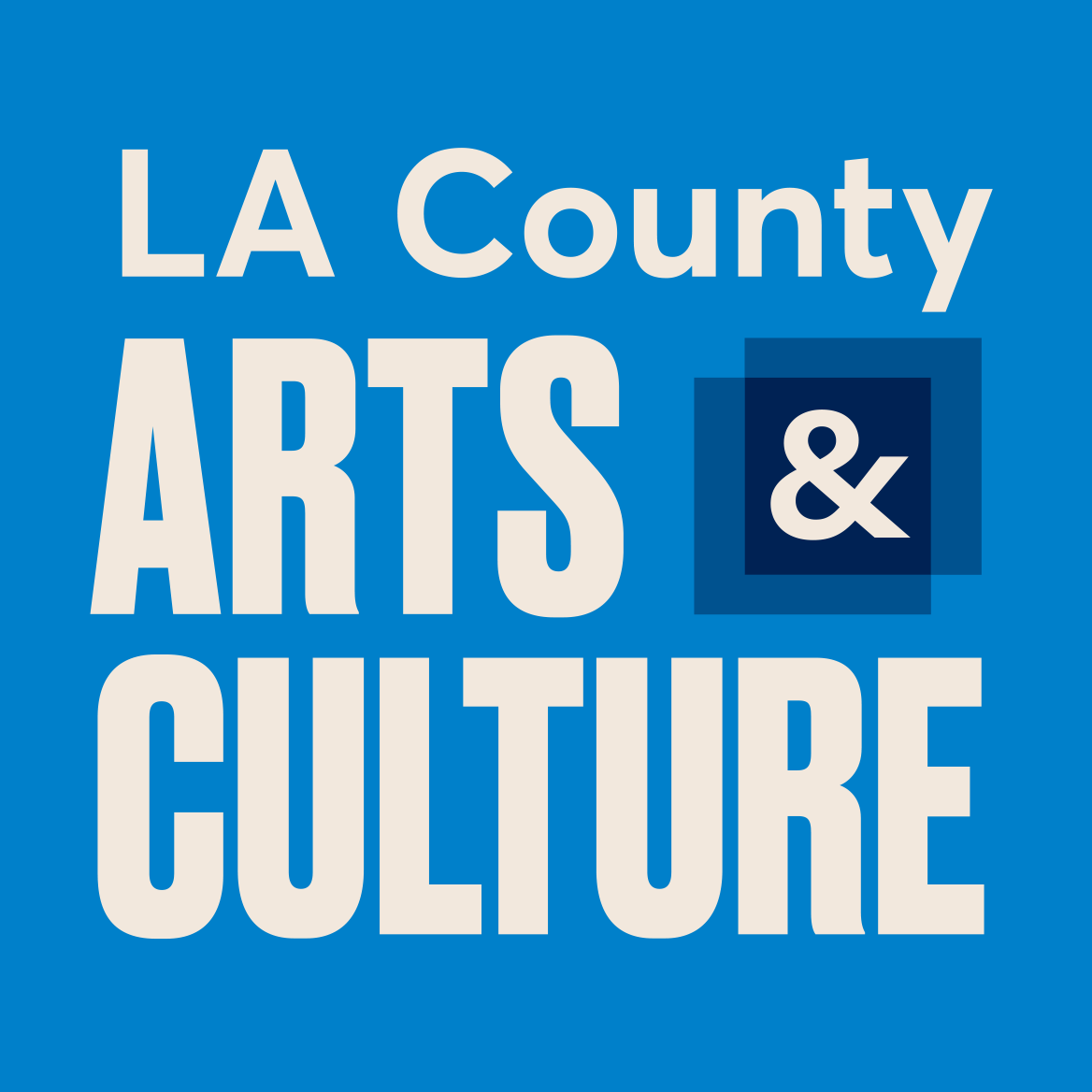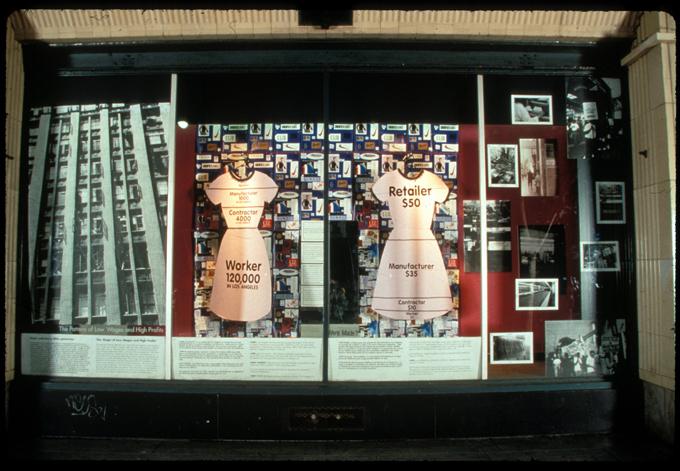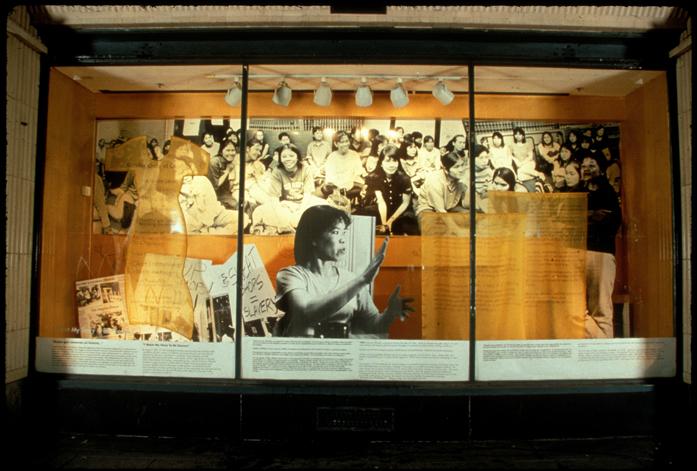About The Artwork
The Shape of Low Wages and High Profits by Roxane Auer, 1997, Mixed media
By the 1990s, Los Angeles was the largest garment industry in the United States, fueled by low-wage immigrant labor and sky-rocketing profits. The personal and political reality of work in the garment sector and the growth of dynamic organizing in the industry and Los Angeles between 1900 and 1998 is at the heart of this piece. These issues are very much alive today. While LA’s garment industry has shrunk since the 1990s, wage theft, racism, and inequity still exist in the industry. I Want My Story to be Known provides an inspiring backdrop to the rising labor organizing in the garment sector and in other exploitative industries across the county.
I Want My Story To Be Known by Judy Branfman and Eva Cockroft, 1997, Mixed media
In August 1995, 75 Thai immigrant women were found working under semi-slavery conditions in El Monte, focusing national and international attention on the ongoing existence of garment sweatshops. The discovery that slave-made clothes were sold for high prices in upscale stores was shocking. Even before this, community groups like Common Threads supported workers in their efforts to better working conditions and put pressure on retailers and manufacturers to take greater responsibility for the poor conditions in contracting shops. These issues continue today and in Los Angeles, the Garment Worker Center continues the work to organize and empower garment workers.


